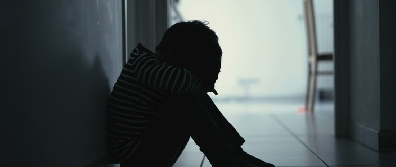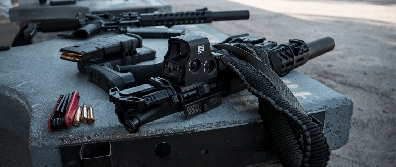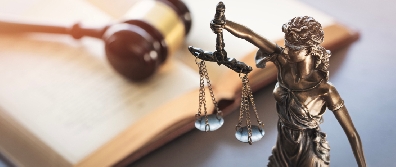9 Steps to Take After a Bicycle Accident
Accidents between motorists and cyclists can be frightening, and often are catastrophic. Motorists are typically familiar with what to do after an accident involving two motor vehicles, but the circumstances of a bike accident, as well as the injuries sustained, can be quite different when a bicyclist is involved. If you are a cyclist and have been injured in a collision with a motorist, there are several steps you must take to ensure your personal health and legal rights.
1) Get Off the Road
This may seem like a simple suggestion, but a collision can create panic and confusion. It’s difficult to make good decisions after you have been slammed by a car. If you are able to move safely, moving off the road will help prevent further injuries from oncoming traffic that may not be able to see you. This is the most urgent priority.
2) Take a Moment and Assess Injuries
Adrenaline and confusion are common after an accident. Your injuries may seem minor to you, but can be quite serious, or even life-threatening. Even if you have no broken bones, can bear weight, and speak normally, you may still have sustained serious injuries. Always check your bicycle helmet for any cracks. If your helmet is cracked, you should assume you have a concussion and need medical attention immediately. However, even if you feel as if you have no serious injuries, it is always a best practice to call 9-1-1.
3) Call 9-1-1
Do not hesitate to call 9-1-1. Unlike collisions between cars, when you are in an accident on your bicycle, broken bones and severe injuries are common. During this traumatic time, it is difficult to determine how serious your injuries are. You may be in shock or unaware of serious internal injuries. Many times the body’s shock response not only makes clear thinking difficult, but also masks the seriousness of injuries. Depending on how severe the accident was, the most important thing you can do is get evaluated by a medical professional. Before anything else, always call 9-1-1.
4) Have the Police Create an Accident Report
Make sure that you contact the police, even if you decide not to call 9-1-1. The scene of the accident may be chaotic, and many people may not think to contact the police to create a report if the collision is between a vehicle and a bicycle. However, the police report can be crucial to your case if you decide to pursue a claim. Witnesses, facts, and evidence can all be lost or misremembered if a police report is not taken. It is vital to request that the police officer responding to the scene take a report. You likely sustained damage to your bike and may have injuries that appear superficial at the time, but which in fact are more serious. This police report will be a foundation for any claim you may make in the future, and your attorney can use this report to understand the facts involved in your case. The police report is also important for local governments to keep track of collisions related to bicycles.
5) Exchange Contact Information and Insurance Information
Both parties should exchange names, addresses, phone numbers, and insurance information including the name of the insurance company and policy number. Using your cell phone to capture a picture of the insurance card and the license plate is an excellent practice. Do not attempt to argue about whose fault the accident was, as all of that can be sorted out at a later date.
6) Get Witness Information
If there were any witnesses to the accident, they can help determine the actual events in the proper sequence. While many good Samaritans will volunteer this information, it is important to request these statements if you are able to do so. You should also obtain the witness contact information for future reference. So often witnesses wander off, and no one gets their ID.
7) Get Both You and Your Bicycle Checked Out by Professionals
If you did not immediately call 9-1-1 and get assessed by a medical professional, it is imperative that you do so as soon as possible. This is important not only for your own health, but also for any legal claim you may make in the future.
Additionally, there is no need to rush to get back on your bicycle. While you may be anxious to get back into your favorite activity, it is important to let any injuries you have heal completely. Make sure that you follow any protocol prescribed by a medical professional before resuming cycling activities. This will all be important to any claim for damages you may file in the future as well.
The damage to your bike should also be assessed. Take your bicycle to a professional shop so that the damages can be estimated and documented. Do not ride your bicycle again until it has been inspected for damage, as this can cause catastrophic harm to the bicycle frame, especially if it is made of carbon fiber. It is important to note that riding a bicycle that is damaged can also cause new or further frame failure, which in turn could cause you even more serious bodily harm. Hairline cracks invisible to the eye could compromise the structural integrity of your bicycle.
8) Document the Event
Take photos of the accident site, your injuries, the vehicle, the surrounding area, and your bicycle. Write up your own version of the events that occurred that day, the injuries you sustained, work you may have missed due to the collision, and any other important facts that may be relevant to a future claim. Look around for any security camera or homes that have video doorbells. Take pictures of anything that might help. You are not going to go knocking on doors for video of the crash then and there, but someone should do that for you as soon as possible. If police respond to the scene, ask them if they can look around and get any available video for you—this is a service that most police departments are willing to perform when they respond to an injury accident.
Make sure that you keep all of your photos, as well as any statements or contact information from witnesses regarding the scene of the accident. Maintain good records of medical bills, doctors' notes, conversations with witnesses, and the driver of the motor vehicle. As time goes on, consider keeping a diary of your symptoms and how you physically feel over time, as your immediate symptoms may change, and your physical limitations may worsen over time. This documentation will be useful in the future if it is determined you have a legal claim.
9) Contact a Bike Accident Attorney
A collision between a bicycle and a motorist can be devastating physically, emotionally, and financially. Do not speak with any insurance adjuster directly, as any information you provide can result in a denial or undervaluation of what you are owed. Despite whatever they may say, there is absolutely nothing they need from you right away. Instead, you should contact an attorney as soon as possible after the accident. An experienced and knowledgeable bike accident attorney in San Francisco can assess your case and determine what legal recourse you may have regarding your bicycle accident.
If you or a loved one have been injured in a bicycle collision due to the negligence of another person, contact our compassionate legal team at Callaway & Wolf at (415) 541-0300. We are fully dedicated to providing strong, relentless advocacy in order to help you recover the compensation you are entitled to.















Comments